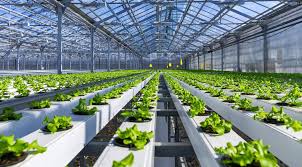When it comes to future opportunities, for Zimbabweans the first name that comes to mind is the Billionaire Dr Strive Masiyiwa. He is the only officially recognised Zimbo although there could be more underground billionaires.
If we are to go with official records, what is it that enabled Masiyiwa to be on top of the totem pole?
- He embraced digital opportunities
- He was fortunate to be in the engineering field and appreciating engineering trends
- He knew the cascading of digital technology-developed world first and Africa last
- He knew technology adoption in Africa is slow as the continent is a laggard
- He was globally minded and saw opportunities beyond Zimbabwe
Latest stats do show that Mark Zuckerberg now has a worth of US$85 billion making the 36 year old the fourth richest person on earth-up from number 7. His net worth has been spurred by the lockdown which catapulted the use of social media.
Amazon CEO Jeff Bezos is the second largest gainer with his Amazon stock up 29% since Marc 23 with a net worth of US$146,9 billion.
We do not need to dig deeper, the trend is crystal clear….the future is digital. Those who are strategically placing themselves with tech opportunities will advance at the expense of those still stuck in the old business models.
The next billionaire to join Strive Masiyiwa in the billionaire’s club is obviously a tech-savvy person. It is unfortunate that The Fourth Industrialisation is not a buzz word in Zimbabwe. This shows that once more, Zimbabweans will be the last to grab the 4IR Opportunities like they did with 3IR Opportunities. South African company executives had been making a beeline to India before the lockdown. Companies there appreciated its importance and the benefits to accrue from it but our country’s top executives remain glued in the past.
Tech Opportunities Strategic Positioning
- Appreciate latest trends across the globe
- In Africa the first countries chosen for tech opportunities are usually South Africa, Nigeria, Kenya and Egypt. Rwanda joins the list too.
- Read Engineering and ICT Journals
- Follow Strive Masiyiwa on social media
- Cultivate a keen interest in everything tech
Masiyiwa is good at future envisioning-he sees opportunities 25 years away! How far do you think about the future? Do you have the patience to discuss about this with others? How many tv shows, newspaper articles or radio shows talk about the future 10-20 years from now?
The good news is we will be creating a Whatsapp group with a focus to future tech opportunities. Do watch out for details.
![]()











